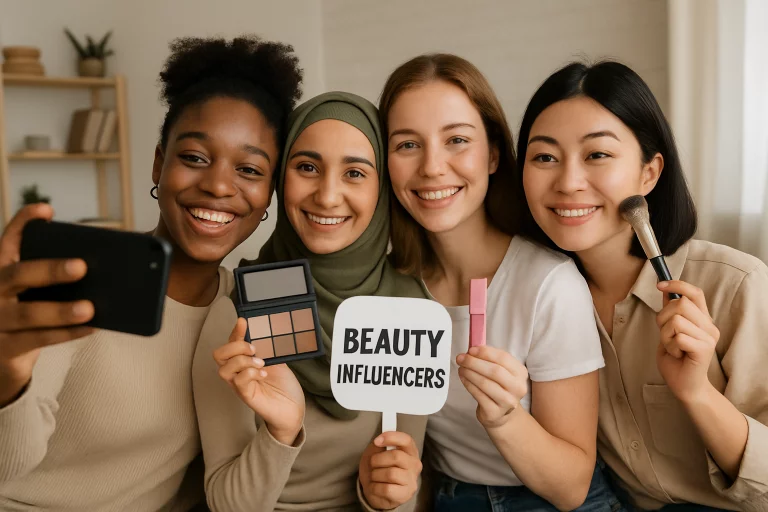In today’s digital-first era, the beauty industry is experiencing a remarkable transformation driven by the growing influence of social media personalities, known as influencers. Brands no longer rely solely on traditional channels like print or television commercials to capture attention. Instead, they are harnessing the power of personal recommendations, compelling stories, and genuine two-way engagement that influencer collaborations can offer. By working closely with the right partners, including specialists such as a beauty influencer marketing agency, companies ensure their campaigns are precisely targeted, emotionally resonant, and capable of delivering robust, measurable results in today’s competitive market.
As the beauty landscape becomes increasingly saturated with new products and brands, standing out requires much more than the conventional approach of showcasing glamorous visuals or celebrity endorsements. Today’s beauty buyers crave authenticity, honest feedback, and relatable stories that mirror their experiences. This evolving paradigm is helping brands broaden their audience, create meaningful individual connections, and cultivate deep loyalty among consumers who demand to see genuine representation and hear voices they trust.
The Rise of Micro-Influencers
Micro-influencers—social media creators with audience bases ranging from 1,000 to 50,000 followers—have firmly established themselves as a powerful driver of beauty brand growth. While they may lack the star-studded appeal or massive reach of celebrities or macro-influencers, micro-influencers nurture tightly knit communities where their voices carry more personal weight and authenticity. According to Influencer Marketing Hub, Instagram accounts with fewer than 5,000 followers have an incredible average engagement rate of 4.21%, far exceeding the 0.95% engagement seen by accounts with more than 100,000 followers.
Why Brands Are Investing in Micro-Influencers
The appeal of micro-influencers lies in both the relatability and responsiveness they bring to the table. Their interactions don’t feel scripterly promotional; their product endorsements often come across as honest recommendations from a trusted friend. Because micro-influencers are more accessible, they frequently respond to questions, offer personal insights, and foster a welcoming environment where followers feel valued and heard. This real-time, two-way conversation not only builds a more authentic connection but also inspires higher levels of brand loyalty and conversion rates. For brands seeking meaningful growth, investing in micro-influencers is no longer a passing trend—it’s a strategic necessity for building credibility and sparking genuine customer advocacy.
Authenticity Over Perfection
Consumers’ expectations and appetite for authenticity and transparency have evolved. The overwhelming presence of filtered and highly polished content has driven many audiences to crave honesty over unattainable perfection. This shift has led to the “deinfluencing” trend, where influencers are equally candid about products that do not meet their expectations. These sincere, sometimes brutal, reviews cut through the marketing noise and elevate those brands brave enough to embrace real feedback. Honest assessments—not just of what to buy, but sometimes what to avoid—establish influencer integrity and encourage a more informed, self-assured consumer population.
The Power of Raw, Real Content
Beauty brands willing to empower influencers with creative freedom and permission to share unfiltered, genuine opinions are reaping the benefits. Audiences respond to vulnerability—they want to see real results, common challenges, and even the occasional beauty mishap. By showcasing influencers using products in real-life scenarios, or even admitting when a product isn’t quite right for everyone, brands foster a reputation for transparency and establish themselves as trustworthy guides rather than hard-sell marketers. This boosts brand loyalty and helps brands cut through the competition by building a loyal core of advocates who appreciate relatability over perfection.
Live Shopping Events
With the exponential growth of digital commerce, real-time interaction has never been more valuable or effective than it is today. Platforms like TikTok, Instagram, and YouTube have seen a surge in live shopping events, where influencers demonstrate beauty products in a format that blurs the lines between entertainment and retail. During these sessions, viewers can watch live demonstrations, ask questions, and receive immediate, unscripted feedback about a product’s efficacy or how to use it. According to Influencer Marketing Hub, TikTok users are now 1.7 times more likely to participate in a brand’s live broadcast when they intend to shop, highlighting the decisive role these interactive moments play in driving direct, impulse-driven sales.
Live Shopping: Bridging Content and Commerce
The magic of live shopping lies in its immediacy. Customers aren’t just passively watching—they’re engaging in a dynamic, two-way conversation with the influencer and sometimes even the brand itself. Viewers can see products tested in real time, ask for personalized advice, and experience the thrill of instant purchases. This seamless fusion of entertainment and commerce removes much of the friction from the customer journey and generates buzz around new launches. Many brands are building entire product release strategies around live shopping events, harnessing the excitement and urgency these digital moments can spark.
Embracing Inclusivity and Diversity
In recent years, the beauty industry has moved decisively toward championing inclusivity and celebrating diversity in every form. Brands that partner with influencers of all races, genders, body types, skin tones, and personal backgrounds are strengthening their connections with modern, multicultural audiences. By prioritizing authenticity, companies do not expand potential reach and communicate their values to consumers seeking brands with a conscience. As examined by Ryme.ai, inclusive influencer campaigns go beyond short-term sales—they nurture communities, build trust, and help dismantle long-standing industry stereotypes.
Creating an Authentic Brand Image
Today’s consumers are increasingly deliberate about the brands they choose to support. They want to see themselves—and the diversity of their real-world experiences—reflected in the advertising and content they consume. Beauty brands uplifting underrepresented voices and stories set themselves apart as leaders in positive change. These brands enjoy the loyalty of consumers who feel seen, respected, and part of a genuine brand community. Inclusive marketing is now proven to enhance both brand reputation and bottom line, as it ignites passionate word-of-mouth advocacy and positions companies as allies in a more equitable industry environment.
Leveraging AI and Predictive Analytics
The powerful integration of artificial intelligence (AI) and predictive analytics has elevated influencer marketing for beauty brands beyond manual guesswork and generic outreach. State-of-the-art AI tools can now pinpoint ideal influencers, automate the complex logistics of campaign management, and provide in-depth consumer behavioral insights that were once impossible to gather at scale. This means brands can precisely target niche audience segments, track interactions in real time, and optimize campaign performance on the fly for maximum impact.
Virtual Influencers and Hyper-Personalized Campaigns
One of the most innovative frontiers in this space is the emergence of virtual influencers—AI-powered digital personalities who engage followers in lifelike interactions across social platforms. These personas allow brands to experiment with new types of content and storytelling, launch global campaigns at the push of a button, and deliver hyper-personalized messaging based on each user’s preferences and past engagement. The result is scalability, consistency, and creative freedom, enabling brands to test new narratives, understand audience sentiment in real time, and respond quickly to changing trends or viral moments.
Conclusion
The evolving partnership between beauty brands and social influencers represents much more than a fleeting trend—it signals a fundamental industry shift toward authenticity, inclusivity, and next-generation data-driven strategy. From harnessing the trust and relatability of micro-influencers to delivering the excitement of live shopping events, from making inclusivity a core value to pioneering AI for personalized campaigns, beauty brands blend innovation with meaningful engagement to drive deep, lasting relationships with consumers. Those who align with experts are best positioned to thrive, as they leverage specialized knowledge and up-to-the-minute strategies. As the beauty sector evolves, embracing these approaches will help brands stand out, delivering campaigns that genuinely resonate and foster trust and loyalty among today’s ever-discerning beauty enthusiasts.


